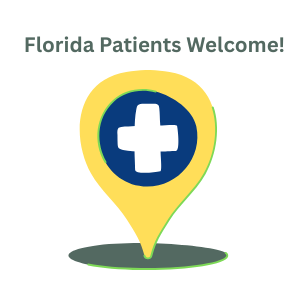If you could slip one skin beauty trick up your sleeve, it would be the avoidance of sun damage. Those who have less pigment (melanin) are the highest risk for the harms of the sun’s rays, right? Yes and no. There may be some surprising subgroups who are at high risk for skin cancers. The ultimate culprit is the ultraviolet A and B spectrum in the sunlight. But hold on for a moment. Dermatologists have studies underway also implicating blue light, the biggest light wave component emanating from the computer screen, as potentially as detrimental as UVA and UVB light. While blue light has therapeutic benefits for some skin cancer and acne treatments, we may find another “sweet spot” in the human body where some is of benefit, and too much, may be of risk.
As my son recently reminded me after his two-year job in Ecuador, the equator (“Ecuador”) gets the strongest UV rays. Add on the high-altitude factor and you have the perfect set up to damage the most amount of skin with the sheer intensity of sun exposure. UVA and UVB light are equally strong in the altitude, but UVB light will get filtered out in the atmosphere and lose its strength and penetrance close to sea level. The most concentrated time of the day is from 10 am-4 pm. Of course, melanin is protective, but not completely sun-proof, so we are speaking to everyone regardless of your Fitzpatrick classification.
Who are some of the surprise citizens at high risk for photodamage? By now most of us realize that fair skin, blue and green-eyed, blond, and red hair are highest risk for melanoma and skin damage, but the high-altitude folks and tropical dwellers join the risk pool. Skin damage is not confined to skin cancers. The light damage is what leads us to redden, pigment, and wrinkle!!! And lest we not forget that organ transplant recipients, immune deficient, autoimmune (lupus is notorious), and outdoor-working patients, as well as those who may work around accelerants (pesticides with farmers, for instance) may have a skin age that is much older than a chronological age. Included in the qualities that make the skin more susceptible to aging is advancing age, urban living, cigarette smoking (think of the accelerants), and drier skin in general.
Outside of staying indoors, how can we hide? Simply stated, cover up! SPF clothing feels better on the skin during perspiration anyway. Breathable, soft woven fabric can be used in and out of the water. The widest brim hat covering the ears and casting a shadow all over the decolletage is the best. I have often described my style as that of a beekeeper when I am out in the summer months. I even use driving gloves to protect the dorsum of the hands, because with skin aging, comes the loss of the barrier and dermal atrophy, which makes the skin even higher risk for burning and aging.
If sunscreen is a must, let us discuss what to look for in a brand or an ingredient. Firstly, empower yourself with knowledge and realize that the SPF ratings determine a “burn rating” which is UVB based light wavelength and not aging, which is UVA based wavelengths. “Broad spectrum” protection includes some protection from UVA aging processes such as wrinkling while also targeting the effects of UVB. The second concept to realize, for instance, is that “30 SPF” refers to the grade given to a product that can extend your burn time. Keeping the math simple, if you typically burn in 10 minutes without protection, 30 SPF implies that you may have 30 times longer of an exposure before burning (10 minutes x 30 SPF = 300 minutes until burn). The product will get tested by incrementally adding burn intensities to help determine this rating. However, this classification assumes ideal conditions that do not include wind, water, sweating, and wearing off with activities. For all kids, I will recommend reapplication every hour, and for adults it is recommended to reapply every 2 hours while uncovered.
There are two main classifications of sunblock. The first is physical such that a pasty block sits on the skin and literally provides a physical barrier that will not allow sun in. Think of the 1960s commercials with thick white zinc oxide on the face. Nothing gets through that paste! These products work well for sensitive and dry skin but may be very difficult to blend into the skin. The second type includes many of the chemical sun blocks that will use chemistry to absorb the UV light and covert those rays over into a heat to release it from the body. They may seem lighter weight and hold up better in sweat and swimming. Not all ingredients will have coverage on both UV wavelengths. We must keep in mind that no matter which style, even those products that have both type of ingredients, look for a broad spectrum (goes after UVA and UVB), non-clogging, oil, and paraben free.
Newer ingredients added to the UVA and UVB blockers will attempt to protect from blue light or the effects of blue light. Rose extract (rosa rubiginosa), vitamin c, ferulic acid (derived from plants), and vitamin E, along with zinc oxide give the added armor against too much blue light exposure. Reparative ingredients are discussed in the “Help” section of the 4-H skin program.
I’ve found it difficult to find SPF products for the face that are also cosmetically elegant. Infused in the pigments of a foundation may also include chemical SPF, retinol, or vitamin C. Or women may prefer to have a designated sunscreen as the base with a foundation applied on top of that for her make-up routine. Of the facial sunscreen companies such as Skinceuticals, Jan Marini, Neova, and Perricone, I am partial to those that offer a tinted block that is broad spectrum or can be greaseless under a foundation when doing outdoor activities. Arbonne has a cruelty-free vegan option. The over-the-counter reputable lines will have full-body coverage, which classically is thicker and less cosmetically appealing than the facial lines. Mineral based lines that do not penetrate the chemistry into the skin may be preferred for kids and adults with sensitive skin and include Cera-Ve, Blue Lizard, Baby-ganics, or Arbonne Baby Care. There are hundreds of product lines, so chat away and help others decide what may work best for them.






Comments are closed.